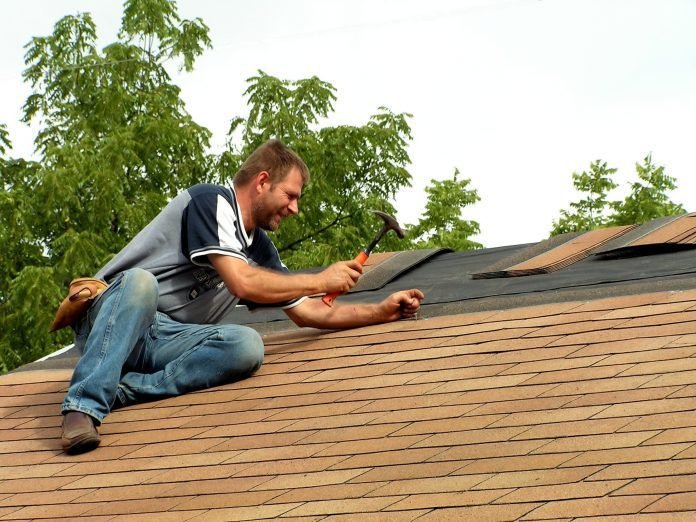Last Updated on August 25, 2022 by
Nothing beats the joy of being a homeowner. You get to call the shots, remodel as you please, and ultimately turn a house into your dream home. However, being a homeowner does come with the potential of some serious financial setbacks.
Some expensive home repairs are unavoidable. With the average homeowner filing only one insurance claim every ten years, it can seem impossible to decide what warrants an insurance claim and what doesn’t.
Fortunately, we’re here to clear some things up. We’re going to take a look at some of the most expensive (and often unexpected) home repairs so that you can make an informed decision about how to pay for them.
Read on to find out which home repairs you have to make that could break the bank.
Table of Contents
Complete Plumbing or Electrical Overhauls
Repairing a corroded pipe or a faulty electrical outlet won’t set you back much. Repairing or replacing individual components of your plumbing or electrical systems can cost as little as $100.
However, what happens if you purchase an older home only to discover that the lead pipes are over 50 years old? What if you discover, to your dismay, that your home is still running off of the dangerous knob and tube wiring?
When you have to completely overhaul your plumbing or electrical systems, it can cost upwards of $2,500. The good news is that a whole new system should last up to 40 years. Plus, if you were unaware of the issue or it hasn’t yet caused residual damage, your insurance company should pay up.
New Roofing
Maybe you’ve been looking at pictures of rooftops and realized that yours is out of date or doesn’t match your exterior aesthetic. Maybe your roof is over 20 years old and it’s starting to show serious signs of wear and tear.
When it comes to an old or damaged roof, you want to act fast. Your roof performs a lot of jobs to keep your home safe, sound, and water damage-free.
A whole new roof can cost upwards of $14,000. If the damage was recent (think high winds or fallen trees), then your insurance company should pay a sizable chunk of the bill. However, if the roof remains in disarray for too long, you may not get the coverage you expect.
Fixing a Damaged Foundation
There’s a reason why no homeowner wants to hear that their foundation has sustained damage. While a minor repair can run about $500, major repairs can cost around $7,000. The most expensive foundation repair can cost over $15,000.
Can you put off foundation repair? After all, you can’t see most of your foundation and it seems secure underground.
The answer is no.
A damaged foundation can lead to the demise of an entire property, causing it to shift and sink in irreparable ways. Even something as simple as a small vertical crack or termite damage needs professional mitigation right away. Fortunately, foundation repair is covered by most homeowner insurance policies.
Window Replacement
Old windows can cost you a fortune. As the seals and weather stripping wear away, you’ll start to feel those tell-tale drafts signaling that your home is no longer energy-efficient. These kinds of seemingly minor issues can knock down the value of your property substantially, and it’s best for your wallet to address them ASAP.
In some cases, you can replace seals and weather stripping at a low cost. However, it’s often best to replace old windows, altogether, and opt for double-paned, energy-efficient windows.
Depending on the number of windows in your home, the cost of this project can vary widely. Window replacement tends to run around $300 per window. If you’re only replacing a few windows, it’s best to pay out of pocket and leave your insurance out of it.
HVAC Replacement
An old or malfunctioning HVAC system is another financial drain. You’ll find yourself paying more and more to keep your home at a reasonable temperature. Plus, there can reach a point where you’re paying more for bandaid repairs than you would for a replacement.
To replace a typical HVAC system, you’re looking at an average cost of about $7,000. The good news is that modern HVAC systems tend to last up to 25 years. They are also more energy-efficient, which means that you’re likely to save money on future energy bills with a new system.
Tree Removal
One of the most unexpected home repairs you may have to make is tree removal. This one is particularly tricky when it comes to finding a way to pay for it.
Usually, you’ll find yourself dealing with tree removal if one or several trees on your property are dying. A tree experiencing any type of rot or decay becomes a risk to the rest of your property. If it falls, it can land on your home, your car, or even people and pets.
The problem? Oftentimes, homeowner’s insurance won’t cover preventative tree removal. Instead, they’ll only cover damage caused by trees that already fell.
Naturally, you’re going to want to remove problem trees before they cause serious damage. That said, tree removal can cost anywhere from $150 to $1000 per tree depending on things like where you live, the size of the tree, and more.
Some Expensive Home Repairs Can’t Be Avoided–How Will You Pay?
Being a homeowner gives you the freedom and control to make the changes you see fit to your property. However, it can also come with some expensive home repairs that you don’t want to ignore or put off. Having a plan for these unexpected issues can help you decide if you want to involve your insurance or pay out of pocket.
Looking for home improvement tips that will help you keep up with your house without breaking the bank? Take a look around for tips, guides, and DIY tutorials.



























